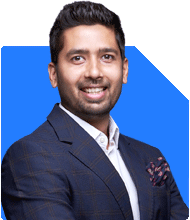43yr, 7-8 lac per month. Plan to work till 60yr. One child6 yrs. SIP in MF 1.2 lac since 1 yr. Ppf maturing next year. Life insurance 2 cr. 2 house, few plots. Kindly advice how to invest my fund for maximum benifit in long term
Ans: You have already taken wise steps. Investing through SIP, having life cover, and PPF maturity next year show good discipline. Your income level gives strong potential for long-term wealth. With right planning, your goals can be met peacefully.
Let us structure the answer with a complete 360-degree assessment.
? Income and Savings Potential
– Monthly income of Rs.7-8 lakhs gives excellent saving ability
– Maintain at least 30%-40% of your income as regular investments
– Your current SIP of Rs.1.2 lakh per month is a good beginning
– There is room to gradually increase this by 10%-15% every year
– Avoid lifestyle inflation. Save first, then spend
? Existing SIP in Mutual Funds
– Continue SIPs in actively managed mutual funds through a Certified Financial Planner
– Don’t shift to direct mutual funds.
– Direct funds may look cheaper. But guidance is missing.
– Without CFP’s supervision, there is risk of poor fund selection
– Regular plan with CFP and MFD gives handholding, reviews, and corrections
– Professional advice helps in fund curation and rebalancing
– Regular plans can also help avoid emotional investing errors
– Don’t stop SIPs in correction phases. That’s when most wealth gets built
? Stay Away from Index Funds
– Index funds have low cost, but very little active strategy
– They mirror the market. They don’t protect from market falls
– No downside protection, no active reallocation in tough times
– Index funds lack fund manager’s expertise and judgment
– Active funds can outperform in sideways or volatile markets
– Stick to actively managed funds that are reviewed by your CFP
? PPF Maturity Next Year
– PPF maturity should be reinvested wisely
– Don't spend it unless it is for a goal
– Reinvest in long-term equity mutual funds via regular plan
– Discuss asset allocation with your CFP before reinvestment
– Avoid putting into fixed deposits or insurance-based schemes
– Consider staggering this lump sum in equity via STP over 12-18 months
? Life Insurance Cover – Review Needed
– Rs.2 crore cover is good. But may not be enough now
– With Rs.8 lakh income and child’s future expenses, a review is needed
– Ideally, have a cover of 15-20 times of annual income
– Go only for pure term insurance. No ULIPs or investment-based plans
– If you hold any ULIPs or endowment plans, consider surrendering
– Reinvest surrender proceeds in mutual funds after discussion with CFP
– Review your insurance every 3-4 years or at major life events
? Property and Plots – Use Caution
– You already own two houses and plots
– No need to invest more into property
– Real estate lacks liquidity, rental yield is low
– Hard to exit, especially during emergencies
– Avoid locking more capital into additional plots or flats
– Instead, use surplus funds to invest in financial assets
? Planning for Child’s Future
– Your child is 6 years old now
– You have around 12 years for college planning
– Continue SIPs in child-specific long-term equity mutual funds
– Target higher education corpus using aggressive asset allocation
– Use separate folio for this goal to track easily
– Don’t mix this with retirement goal investments
? Retirement Planning – 17 Years to Prepare
– You plan to retire at 60. That gives 17 years
– Increase SIPs every year as income rises
– Allocate funds to a mix of equity and hybrid funds
– Don’t rely on property rent or inheritance
– Plan assuming self-dependence post-retirement
– Discuss retirement corpus estimation with your CFP
– Use goal-based planning to build retirement bucket separately
? Emergency Fund and Liquidity
– Keep at least 6-8 months of expenses in liquid mutual funds
– Don’t keep too much in savings account
– Use low-duration or overnight mutual funds for emergency buffer
– Review and replenish emergency fund after usage
– Emergency fund must be kept liquid, not in FD or real estate
? Tax Planning and Fund Selection
– Avoid investing only for tax-saving
– Let your investment be goal-oriented, not just tax-saving
– Choose ELSS under regular plan with guidance of CFP
– Diversify between equity, balanced advantage, and flexi-cap funds
– Understand the new mutual fund tax rules while exiting funds
– For equity mutual funds:
LTCG above Rs.1.25 lakh taxed at 12.5%
STCG taxed at 20%
– For debt mutual funds:
Taxed as per your income slab for both STCG and LTCG
– Plan redemptions wisely with help of a CFP to reduce taxes
? Avoid Insurance-Based Investments
– Don’t mix insurance and investment
– ULIPs, endowment plans give low return and low flexibility
– If you hold such policies, check surrender values
– Surrender and switch to mutual funds after careful review
– Use pure term plan for life cover. Invest rest separately
? Annual Portfolio Review – A Must
– Investment journey needs regular tracking
– Once a year, do complete review with your CFP
– Remove underperforming funds, reallocate as per goal progress
– Adjust SIPs based on changed income or family needs
– Portfolio rebalancing keeps risk in control and improves returns
? Wealth Transfer and Estate Planning
– Prepare a Will to ensure smooth succession
– Mention nominations in mutual funds and bank accounts
– If plots are held, register them properly with clear documents
– Don’t ignore succession planning. It avoids family disputes later
– Also assign Power of Attorney to trusted person, if needed
? Behavioral Discipline – Most Important
– Avoid chasing hot funds or short-term trends
– Market timing doesn’t work. Stay invested for long-term
– Never pause SIPs due to market fear or noise
– Focus on your own goals, not others’ portfolio
– Long-term wealth needs patience and consistency
– Trust your financial planner and stick to the plan
? How to Scale Your Investment Strategy
– Increase SIPs by 10%-15% every year
– Use bonuses and windfalls for lump sum investments
– Diversify across 5-6 good equity mutual funds
– Don’t exceed 7-8 funds, else tracking becomes difficult
– Split investments by goals – child, retirement, emergency, etc.
– Take help from CFP to monitor each goal’s progress
? Checklist for 360-Degree Plan
– Monthly SIPs: On track, but scope to increase
– Life cover: Review and upgrade to 15-20x annual income
– Real estate: Avoid further investments, no liquidity
– Child’s education: Build separate corpus via SIP
– Retirement: Plan with 17-year horizon, increase SIPs annually
– PPF: Reinvest on maturity, via STP in mutual funds
– Tax planning: Use ELSS and goal-based planning
– Emergency fund: Maintain liquidity for 6-8 months expenses
– Estate planning: Prepare Will and ensure nominations
? Final Insights
– You are already ahead with your savings mindset
– Keep emotions away from investing decisions
– With the right review and planning, you can retire peacefully
– Continue SIPs, add more as income increases
– Stay invested in regular mutual funds under guidance of CFP
– Avoid real estate and insurance-based investments now
– Track your goals every year. Small corrections give big impact later
Best Regards,
K. Ramalingam, MBA, CFP,
Chief Financial Planner,
www.holisticinvestment.in
https://www.youtube.com/@HolisticInvestment






























